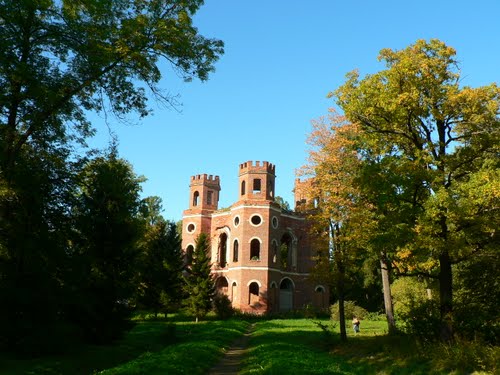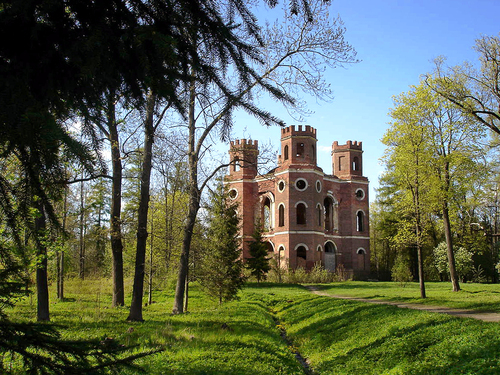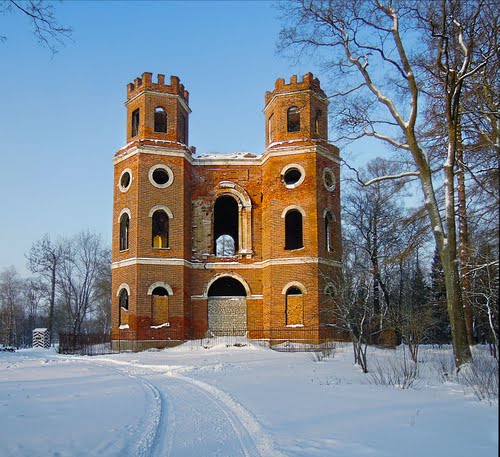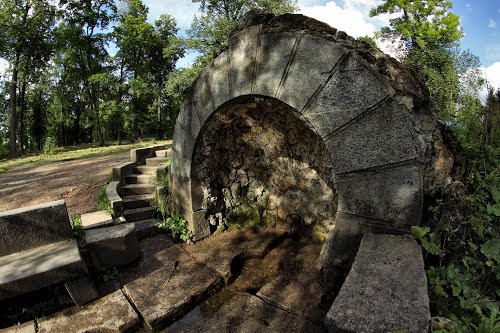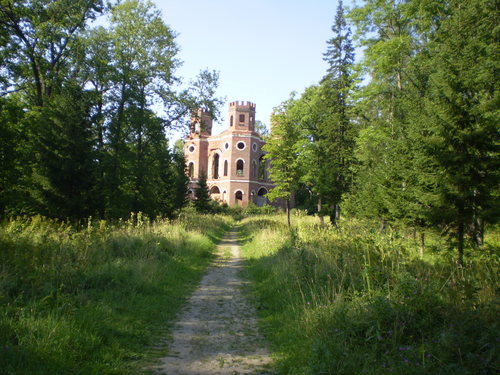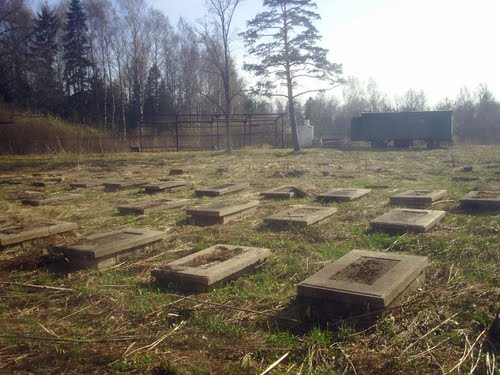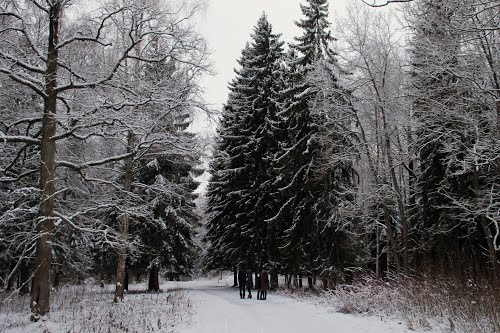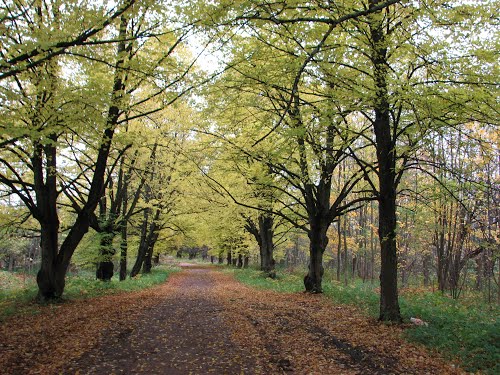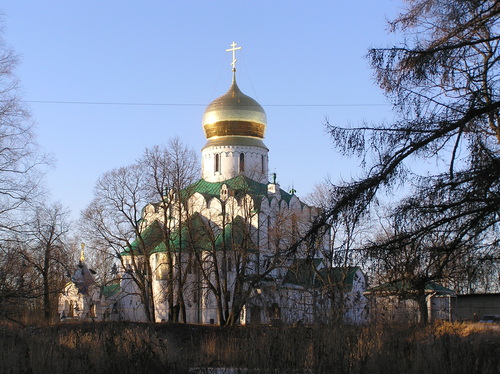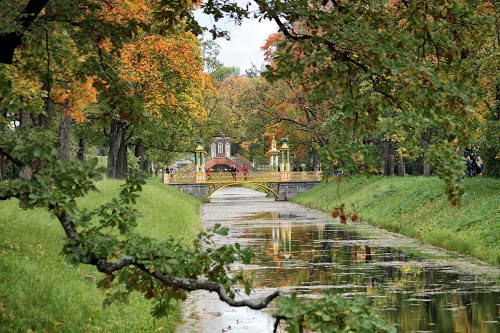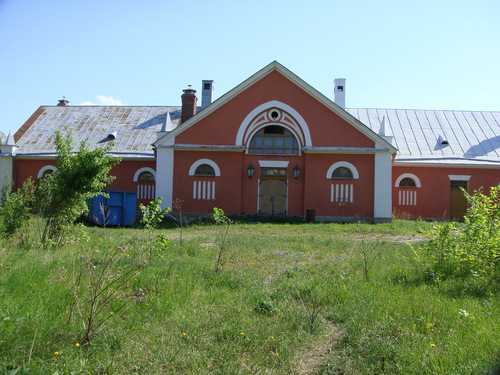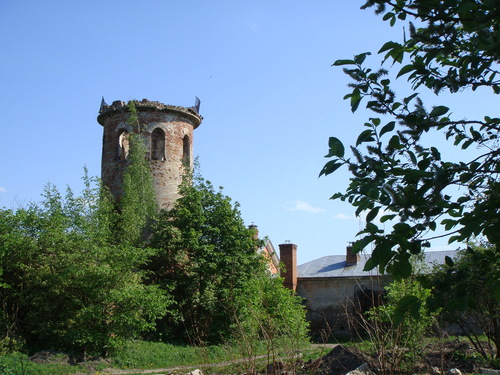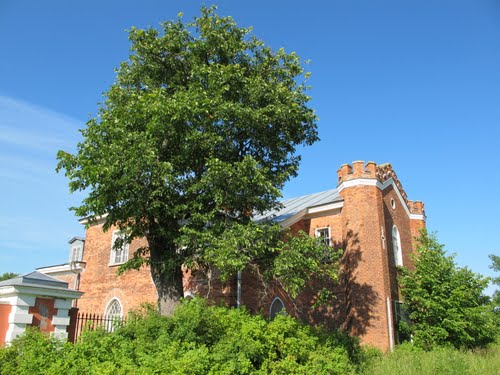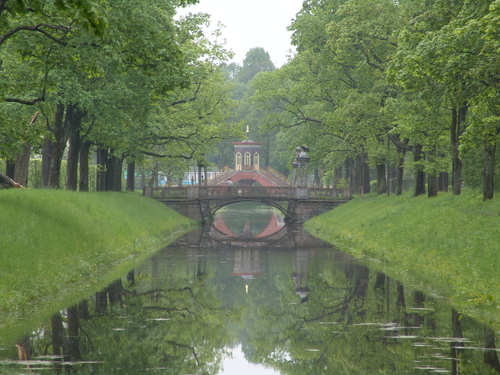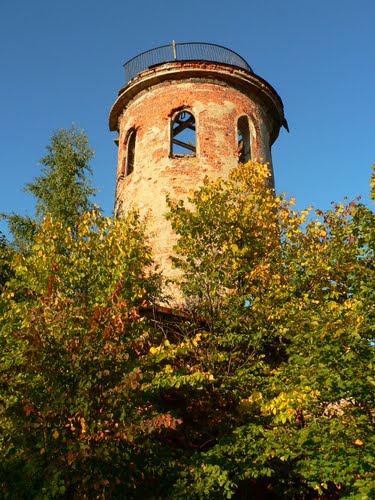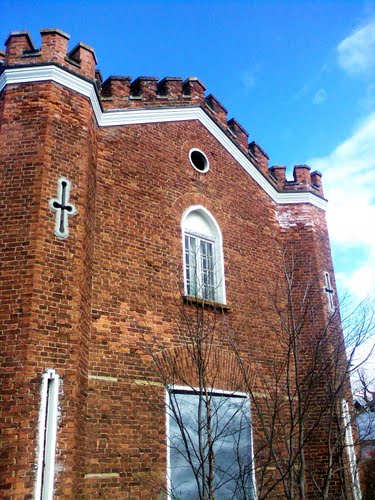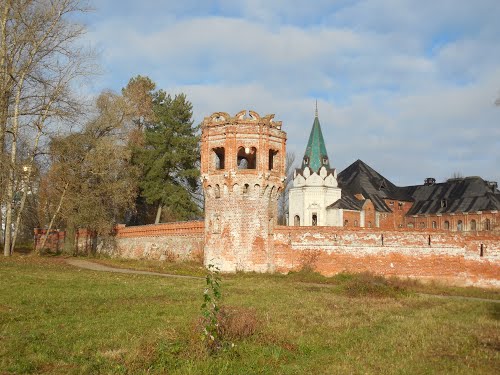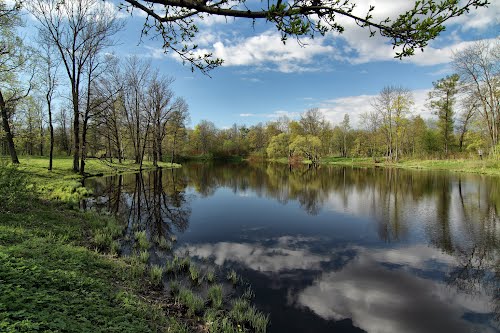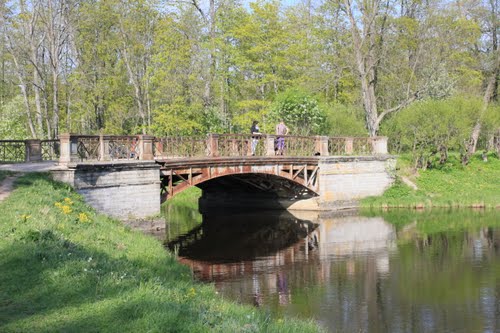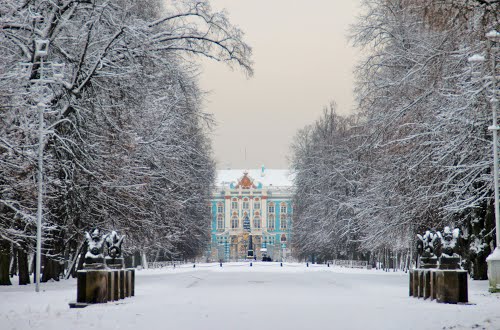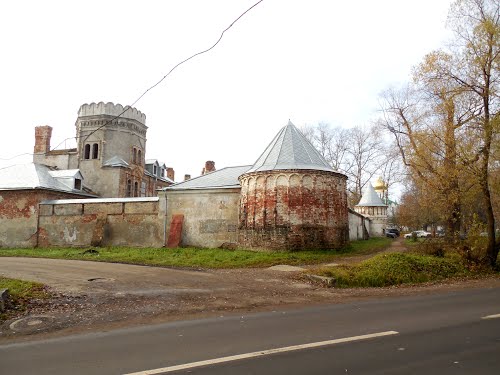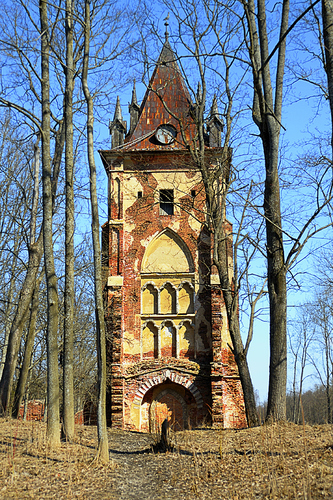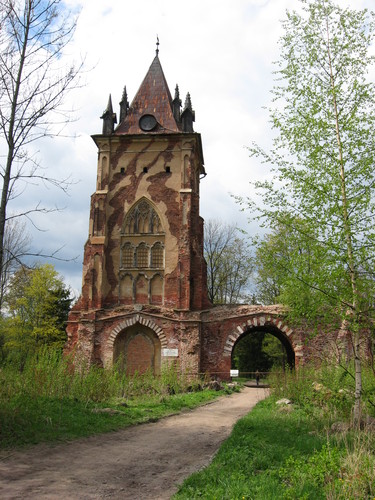The Alexander Park runs directly to the west of the Catherine Palace, and covers around 200 hectares. It begins with what is left of the New Garden, a square surrounded by the Cross Canal and divided into four smaller squares, each with a complex geometrical lay-out. Constructed in the reign of Elizabeth, the New Garden is now almost completely overgrown, with the most visible remains being Mount Parnassus, a small artificial hill covered in birches, and the Mushroom Bed, a convergence of eight little alleys marked by unusually shaped wrought-iron benches that took the place of a gazebo in the early 19th century.
At the centre of one of the quarters of the New Garden stand the remains of the Chinese Theatre, once a full-size opera house with an intimate but extraordinarily sumptuous interior. The original plans for the Chinese Theatre date from 1770 and were the work of celebrated Antonio Rinaldi, who had already built for Catherine the superb Chinese Palace at Oranienbaum. Erected in 1778, the building's relatively simple exterior, the upturned roofs of which were the only real concession to Orientalism, belied the extravagance of the interiors, which were a riot of Chinoiserie decorations that liberal employed gold and silver leaf, embroidered silk, porcelain chandeliers, and antique lacquer paneling. Although the Chinese Theatre was rarely used after Catherine's death, it experienced a revival in the reign of Nicholas II, when the stage was once again used for gala and command performances. Unfortunately, the Chinese Theatre was one of the first architectural victims of the Nazi invasion, and was completely gutted during the shelling of Pushkin in 1941.
Rinaldi's plans envisioned a whole village of Chinese-style buildings around the theatre. His concept was eventually executed in the 1780s further south in the park by Charles Cameron and the Russian father-son team of Vasily and Peter Neyelov. The Chinese Village consists of ten single-storey cottages surrounding an octagonal pagoda-observatory. Still unfinished at the time of Catherine's death, the Chinese Village was reworked and completed by Vasily Stasov in the 1820s, and was turned into guest apartments, frequented by the likes of the famous Russian historian Nikolai Karamzin. The village has been fully restored, and the cottages once again serve as apartments, leased to help raise funds for the restoration of the park.
The landscaped park, which stretches north-east from the New Garden, was mostly laid out in the 1820s by Scottish-born architect Adam Menelas in the romantic style. Among the winding alleyways and varied woodland, Menelas constructed several gothic follies. Ironically, the best preserved is probably the Chapelle, which was designed to represent a ruined medieval belltower. The castle-like Arsenal and White Tower, which was designed as a playground for the children of Nicholas I, were both severely damaged during the Second World War, and are currently undergoing restoration/reconstruction. Close to the Arsenal can also be found the Retirement Stables, which Menelas built for Nicholas I as a home for horses retired from service in the Imperial stables in St. Petersburg. This red-brick pavilion with gothic touches has survived almost fully intact, and nearby there is a Horse Cemetery, where more than 110 of the Imperial family's favourite horse were buried up until 1917.
Also in the far north of the Alexander Park can be found St. Fyodor's Imperial Cathedral and the Fyodorovskiy Gorodok, the latter a barracks for the soldiers of the Imperial bodyguard formed after the assassination of Alexander II. The cathedral was their parish church, completed in 1912 in the Russian Revival style. It also became the house church for Nicholas II and his family. Although severely damaged by Nazi attacks, it has now been almost completely restored, and is once again an active church.


